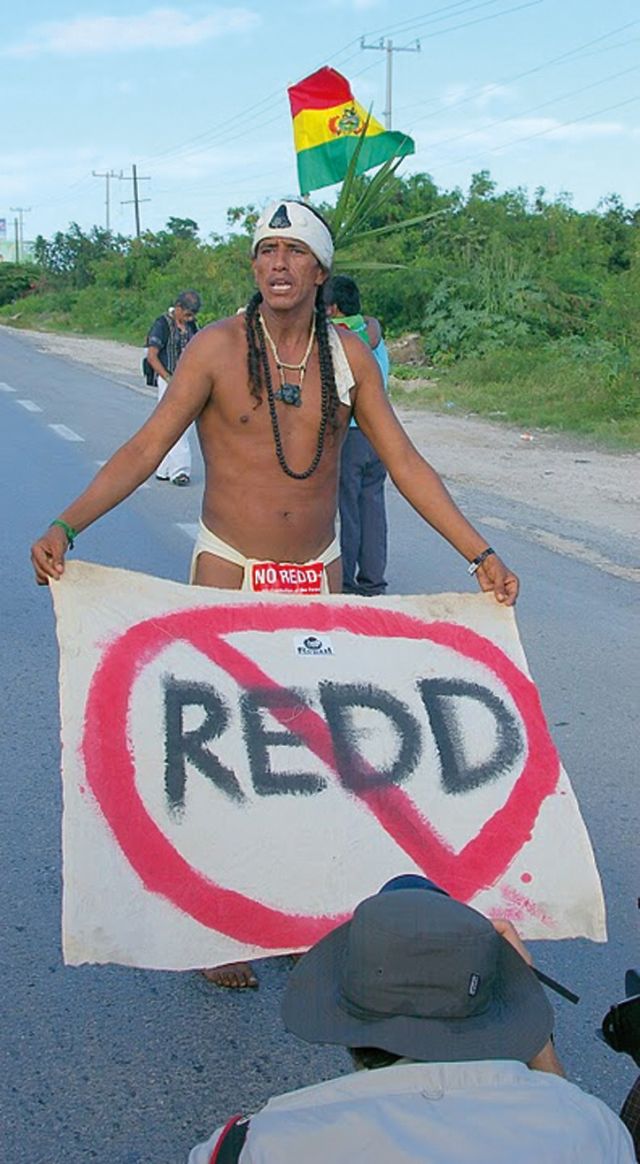
A year has gone by since the results of the climate change negotiations in Cancun were imposed, with the objection of only Bolivia. It’s time to take stock and see where we are now.
In Cancun, the developed countries listed their greenhouse gas emission reduction pledges for the 2012-2020 period. The US and Canada said they would reduce emissions by 3% based on 1990 levels, the European Union between 20% and 30%, Japan 25%, and Russia from 15% to 25%.
Adding up the reduction pledges of the developed countries, the total reduction in emissions by 2020 would be 13-17%, based on 1990 levels.
These “pledges”, according to the UN Environment Program, the Stockholm Environment Institute and even the executive secretary of the Climate Change Convention, would lead to an average increase in global temperature of around 4° C or more. Some continents, such as Africa, would be faced with an 8°C rise.
That is double the amount they established in Cancun: a maximum temperature increase of just 2°C.
With an increase of 2°C, the number of deaths per year attributed to climate change-related natural disasters, which data from the Global Humanitarian Forum presided by former UN General Secretary Kofi Annan put at 350,000 in 2009, could skyrocket into the millions.
About 20-30% of animal and plant species would disappear. Many coastal zones and island states would end up below the ocean.
The glaciers in the Andes — which have already been reduced by one third with a temperature rise of just 0.8°C — would disappear entirely.
Can you imagine what would happen with an average global temperature increase of 4°C or more?
Nobody at the climate change negotiations defends or justifies an increase of that magnitude. However, Cancun opened the door to it.
When Bolivia opposed this outcome, the negotiators told us that the important thing was to save the diplomatic process of negotiation, and that the climate would be saved in Durban.
Now it turns out the reduction pledges for the November 28-December 9 UN Climate Change Conference (COP17) in Durban have not risen by one iota.
Worse yet, some countries announced they may stick toward the lower range of their pledge amounts.
Sadly, throughout this year, the climate change negotiations held in Thailand, Germany and Panama have focused on form rather than content. What is being negotiated is not how the reduction pledges can be increased, but rather, how they can be formalised.

The Cancun “agreements” meant going from an obligatory system with global greenhouse gas reduction goals to a voluntary system with no global goals at all. It is as if one said to the inhabitants of a small town about to be washed away by a flood, “Bring whatever stones you may have and let’s see how high a dam we can build!”
In reality, you must first determine how high the dam should be to stop the flood. Based on that, each family should be told how many stones it must bring to help save the whole town.
In Durban, they are talking about two different paths for formalising the voluntary regime of “anything goes”: one is to end the Kyoto Protocol and list in a COP17 decision the greenhouse gas reduction pledges each country wishes to make.
The other path is to do the same thing by hollowing out the content of the Kyoto Protocol.
In both cases the agreement is to undo the Kyoto Protocol before 2020.
To better understand the second path, let me point out that the Kyoto Protocol now includes a global goal of 5.2% emission reductions for 2007-2012.
The UN Intergovernmental Panel on Climate Change said to limit the rise in temperature to the 2°C it has established, we must reduce by 25-40% emissions for 2013-2020.
Those who advocate maintaining the Kyoto Protocol as an empty shell are the countries that fear the reaction of public opinion, those that believe they have to at least pretend that the Kyoto Protocol will continue in order to placate voters.
But the other reason why they want to maintain a Kyoto Protocol that is empty of emission reductions targets are its collapsing carbon market mechanisms.
The Kyoto Protocol has many weaknesses, but to turn it into an empty shell or make it disappear in Durban would be suicide. The only responsible alternative is to preserve the Kyoto Protocol with an emissions reduction goal that allows us to avoid incinerating the planet.
[Reprinted from http://pablosolon.wordpress.com. Pablo Solon is an international analyst and social activist. He was Bolivia's chief negotiator for climate change and Ambassador to the United Nations from 2009 until June this year.]